Let’s take it back to basics, shall we? Eggs have always been my go-to cheap convenience food because they’re easy, quick, cheap, and endlessly versatile, hence the fried egg in our logo. And while frying an egg sounds like a simple task on the surface, there is more than one way to fry an egg. This guide will help you choose which type of pan to use, what type of fat to use to fry the egg, and different techniques you can use to get your fried eggs exactly the way you like them!
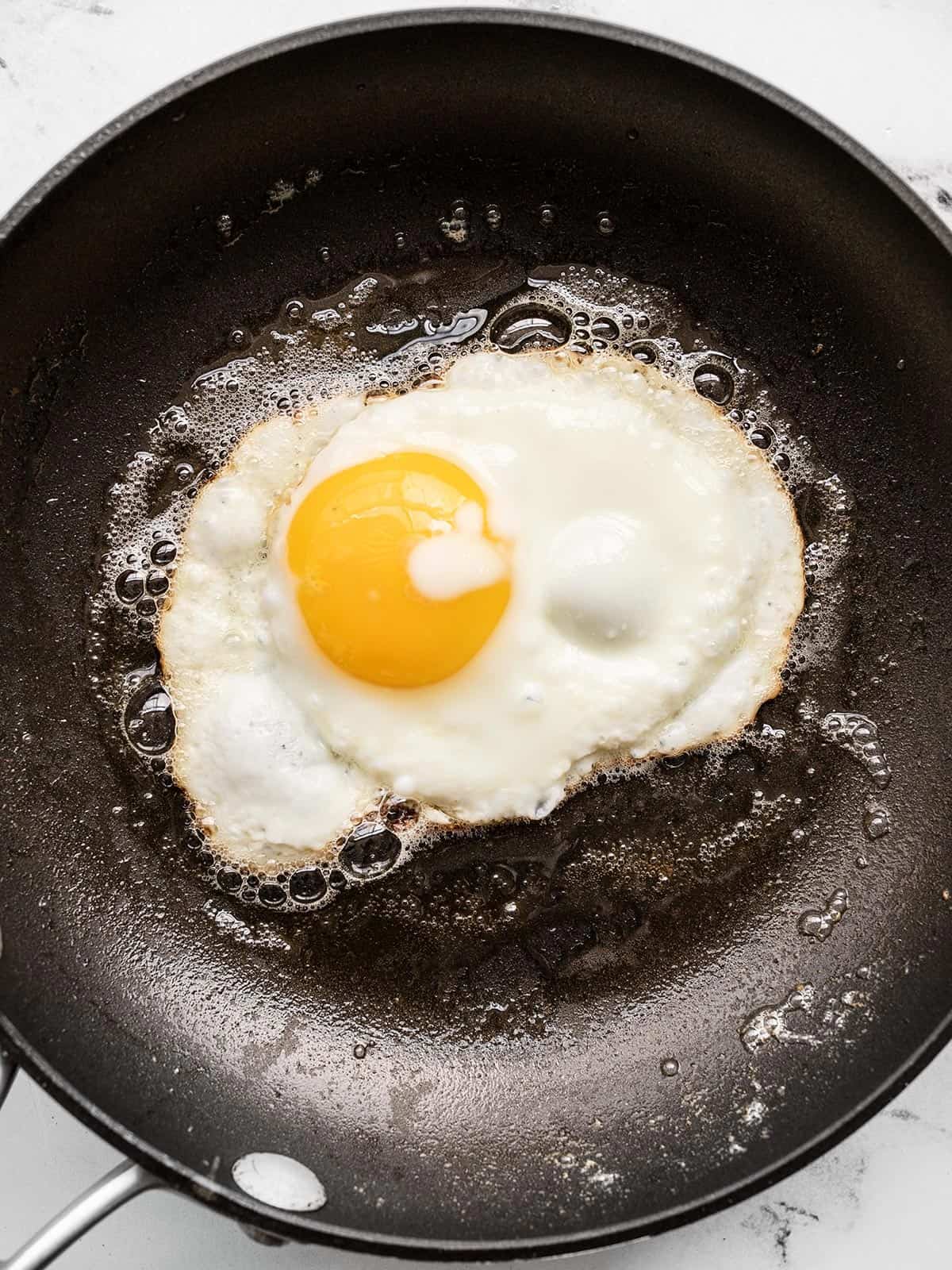
What Kind of Pan is Best for Frying Eggs?
Let’s start with the cookware. While you can use any type of skillet to fry an egg, having some sort of non-stick surface definitely makes the job easier. Whether that be Teflon, a well-seasoned cast-iron skillet, or a ceramic coated skillet, an extra slick surface helps. If you do prefer to use stainless steel, making sure the pan is fully preheated is critical to preventing the egg from sticking. It should be hot enough that a drop of water will fizz and sputter on the surface.
What Kind of Fat or Oil is Best for Frying Eggs?
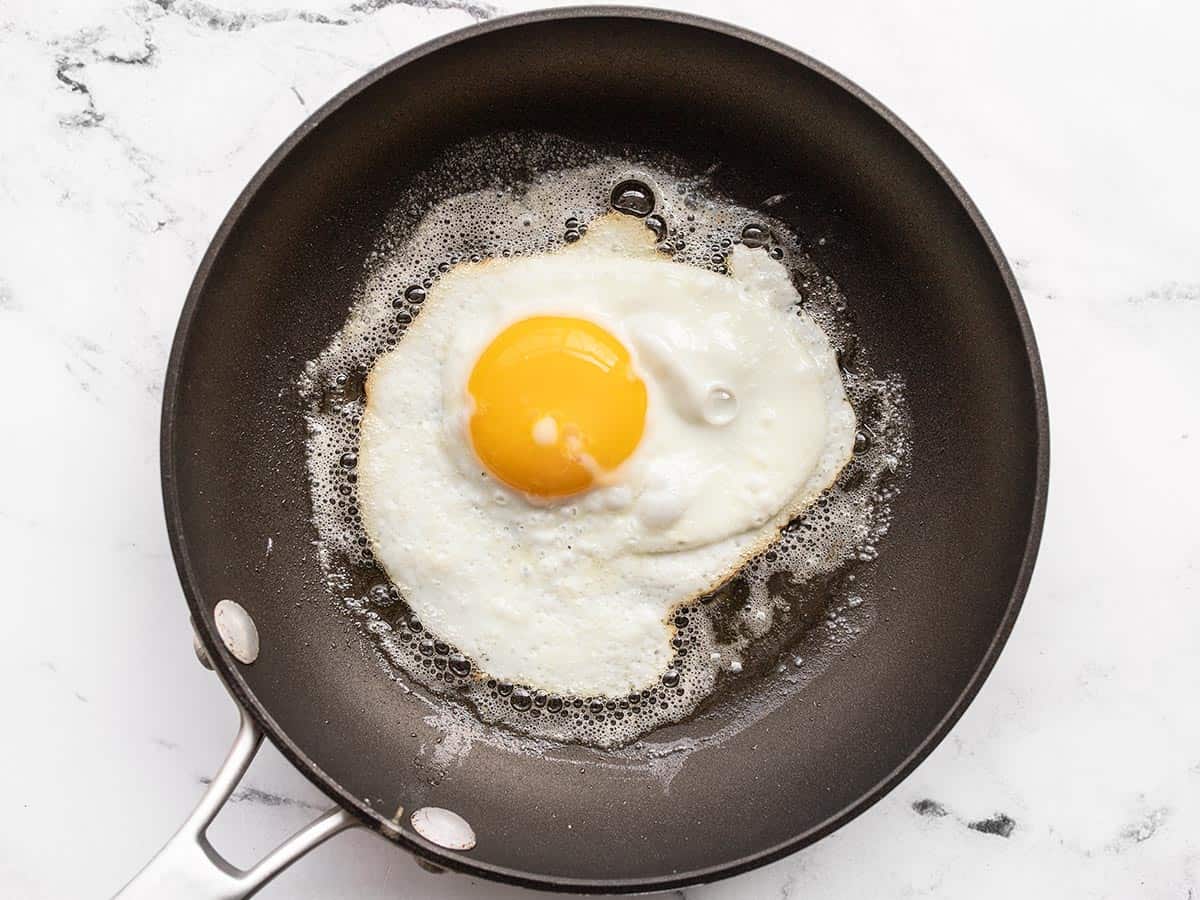
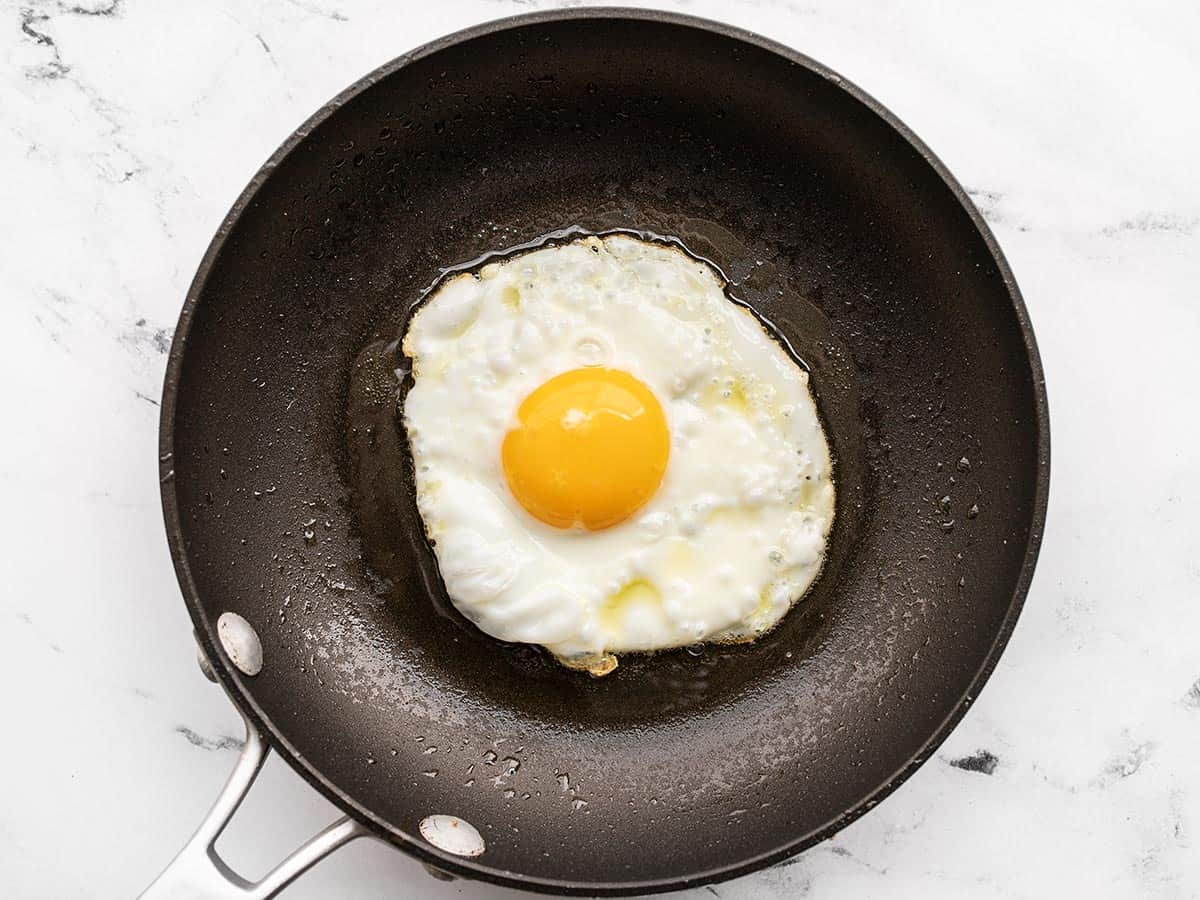
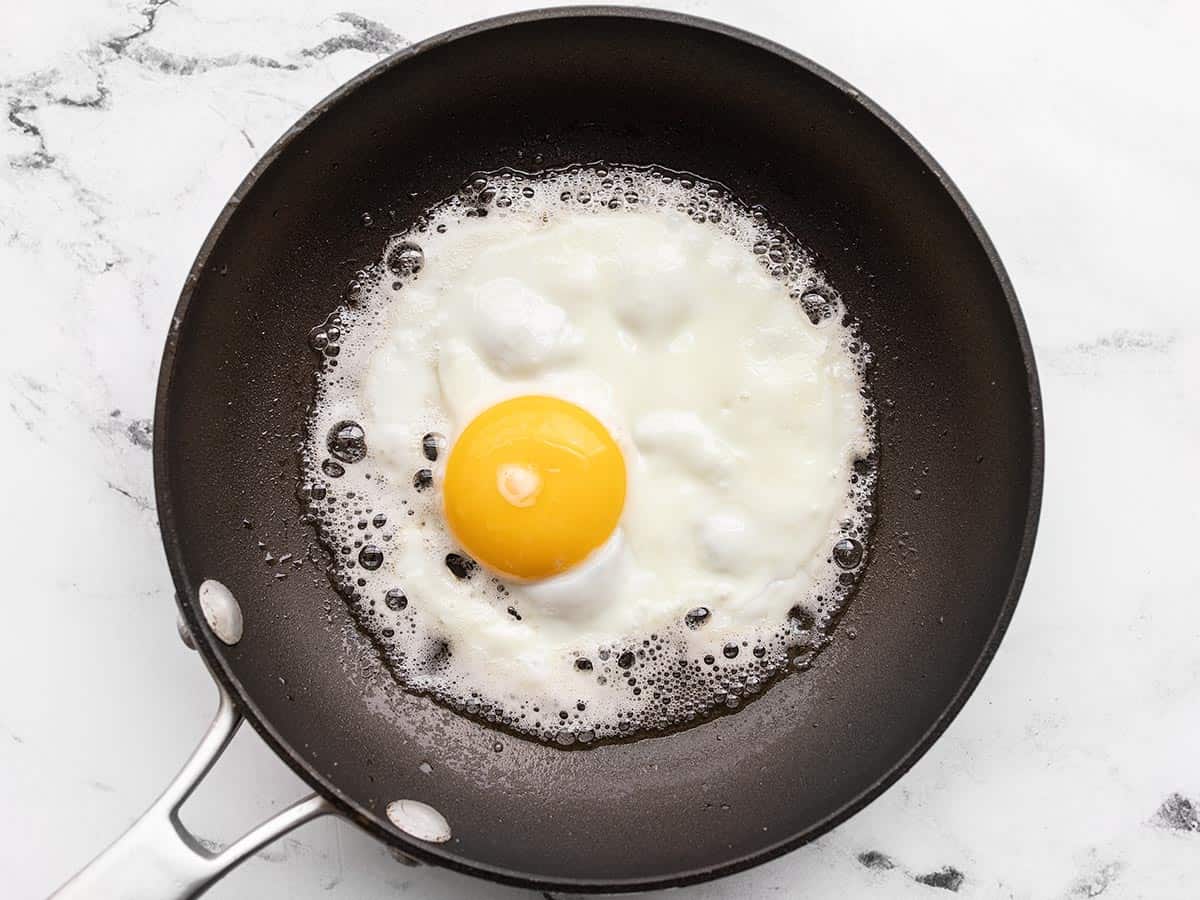
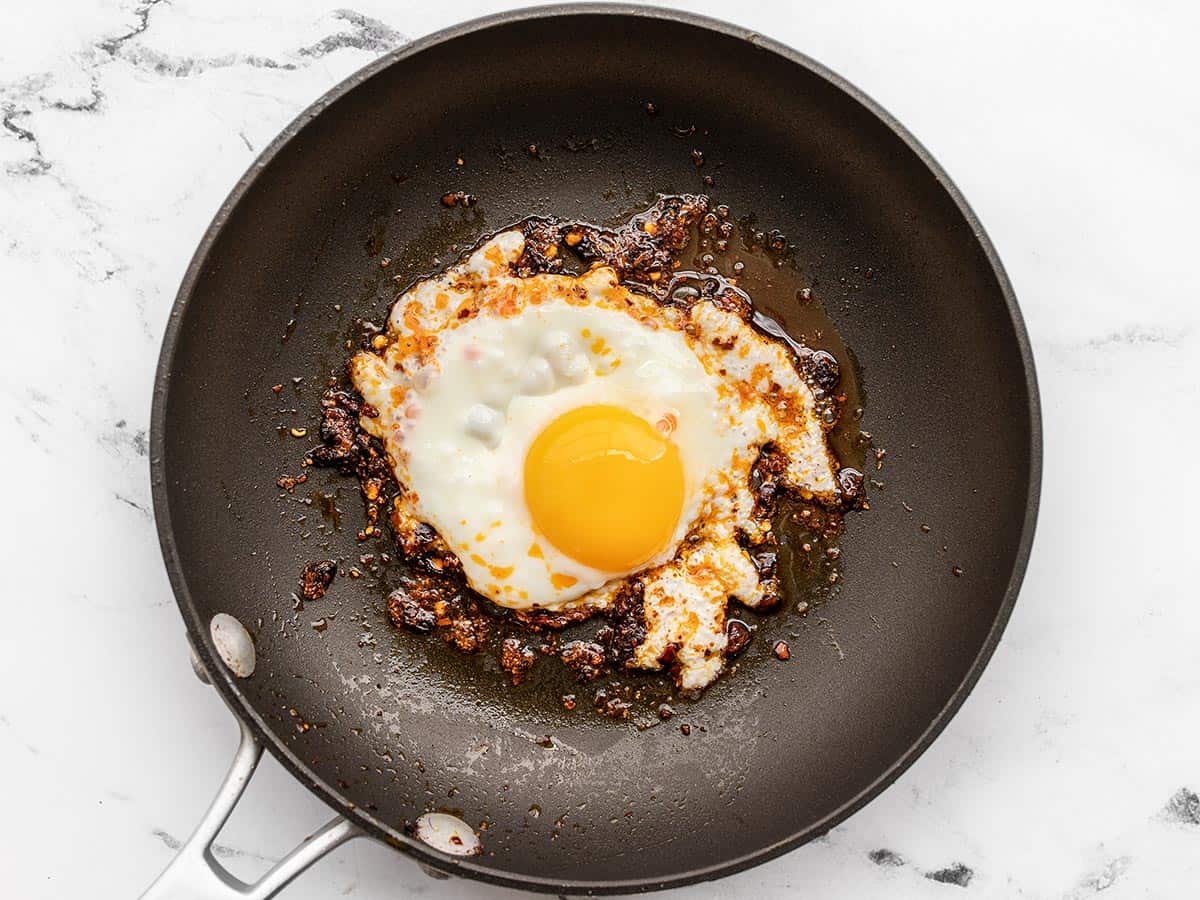
The type of fat or oil you use to fry your egg is all about personal preference. Different fats will produce different flavors and textures in your fried eggs. Here are a few different options and how they will affect your fried eggs:
- Butter – Butter is my top pick because it adds a TON of flavor and creates deliciously browned edges. Bonus: when the butter itself browns in the skillet you get even more nutty flavor.
- Olive Oil – Olive oil is great if you want a more neutral flavor or extra crispy edges. I love the delicately crispy deep-fried edges the oil creates on the egg whites.
- Bacon Fat – Bacon fat is the most flavorful by far. If you want your kitchen to smell like the best breakfast ever made, cook your eggs in bacon fat. Plus, if you’re already cooking bacon with your breakfast, it’s super convenient. Simply cook the bacon in the skillet first, then remove the bacon and cook your eggs in the same skillet.
- Flavored Oils and sauces – Frying eggs in things like pesto have become viral trends on the internet over the past few years and it can be a fun alternative to the usual. Most oil-based condiments will probably work, with chili crisp being my favorite! Just make sure to fry at a lower heat in order to prevent burning the sauce or any solids in the oil.
How to Fry an Egg
The basic steps for frying an egg are simple:
- Heat a skillet over medium or medium-low.
- Once the skillet is hot, add your preferred fat and swirl to coat the surface.
- Crack the egg(s) into the skillet.
- Continue to cook the egg until the whites and yolks reach your desired doneness. Optional: add a lid to the skillet to trap the heat and cook the egg from top-down at the same time (this will create a cloudy surface on the yolk).
BUT, there is more than one way to fry an egg!
Types of Fried Eggs
There are several variations of the basic fried egg, but the most common types are sunny side up, over easy, and over hard. Here’s how they’re different and how you can achieve these different types of fried egg in your own kitchen.
Sunny Side Up
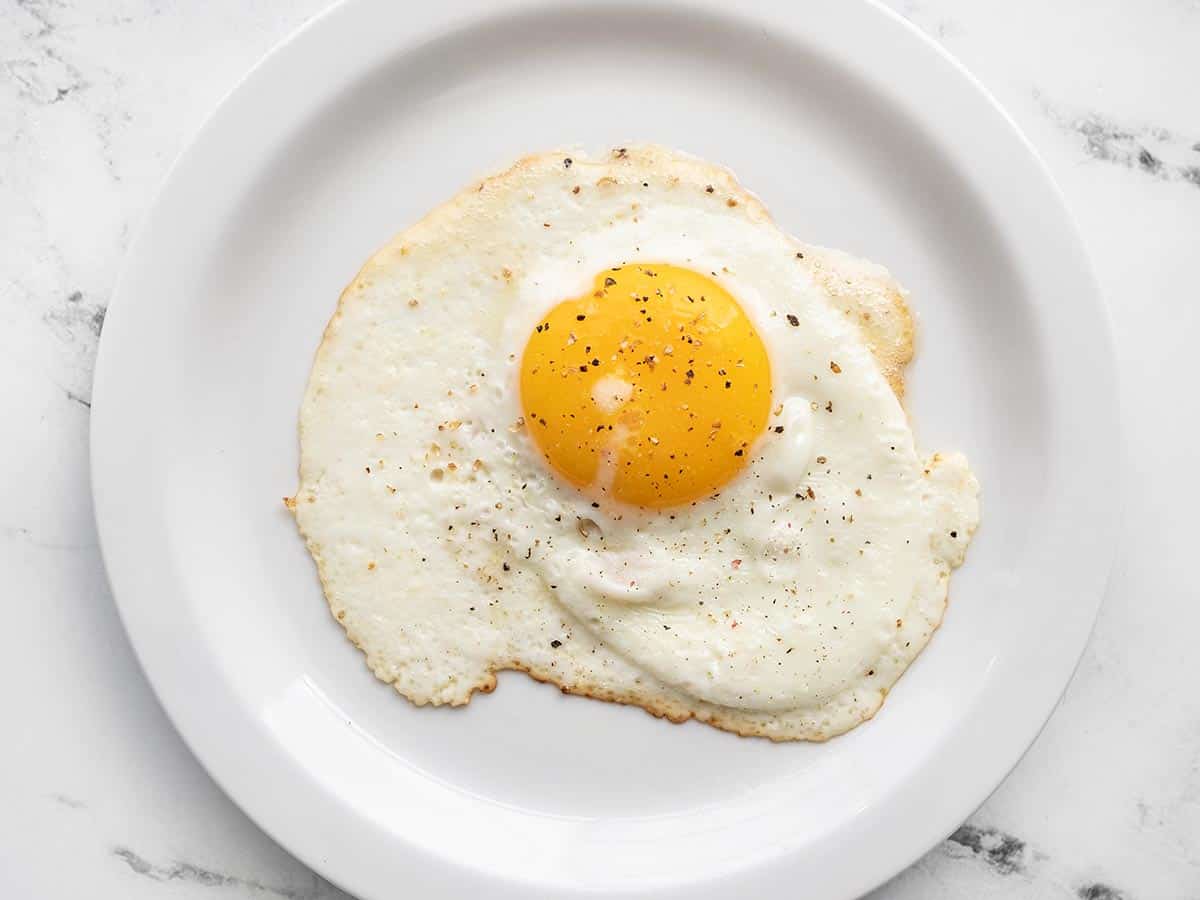
A “sunny side up” egg is an egg that has been fried without flipping until the white are set but the yolk is still liquid. This is, by far, my favorite type of fried egg. It’s gorgeous and that liquid gold yolk is perfect for dipping a piece of buttered toast!
To achieve a sunny side up egg, use medium-low heat so the whites have time to slowly set before the edges become too brown and before the yolk cooks through.
Over Easy
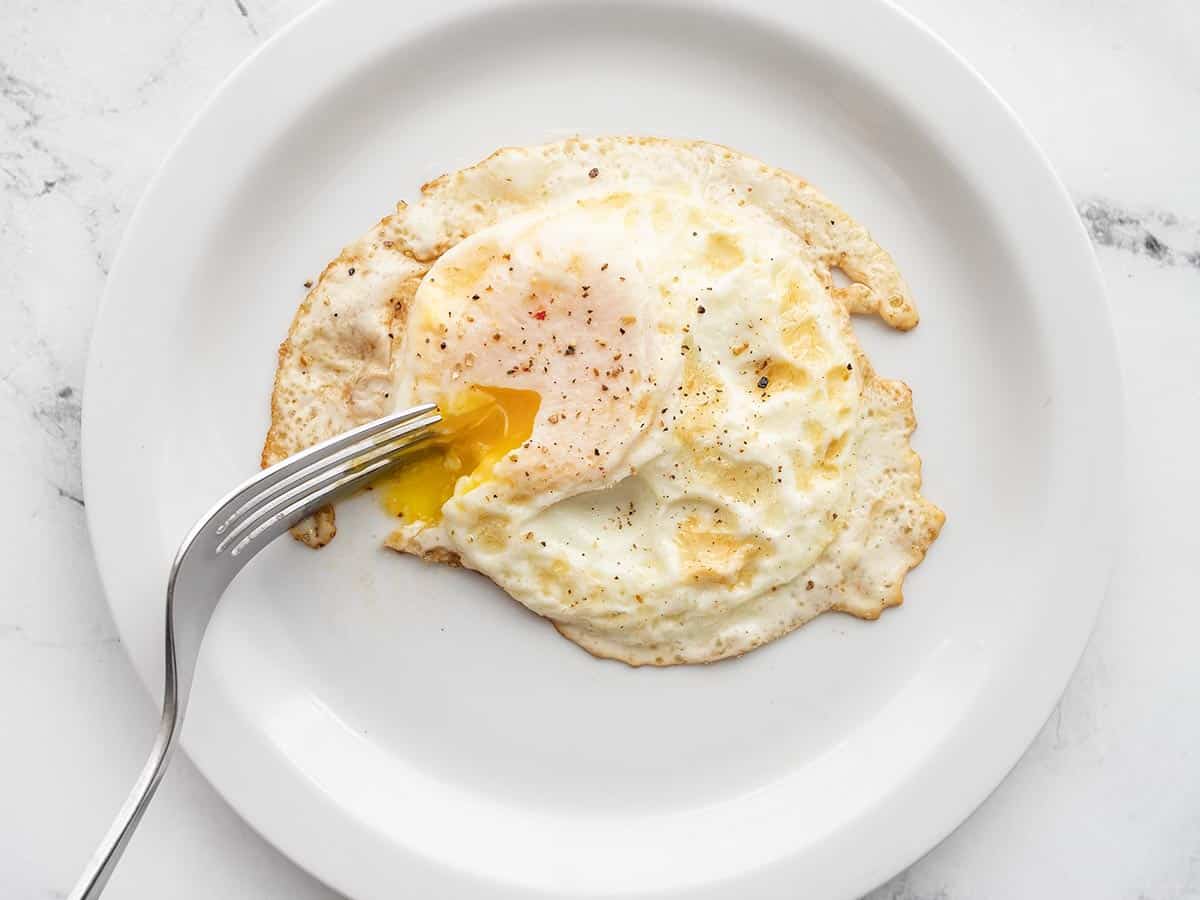
Over easy eggs are great for those who still like that runny yolk but like to make sure the whites are well cooked. They’re also great for adding to sandwiches, burgers, or other dishes where you want a runny yolk but something not quite as delicate as a sunny side up egg.
To fry an egg over easy, fry the egg over medium or medium-low heat (depending on how much browning you like on the whites), then flip the egg when the whites are about 75% set. Continue cooking the egg on the second side for 15-30 seconds just to finish setting the whites and to set the top of the yolk. The center of the yolk should still be liquid.
Over Hard
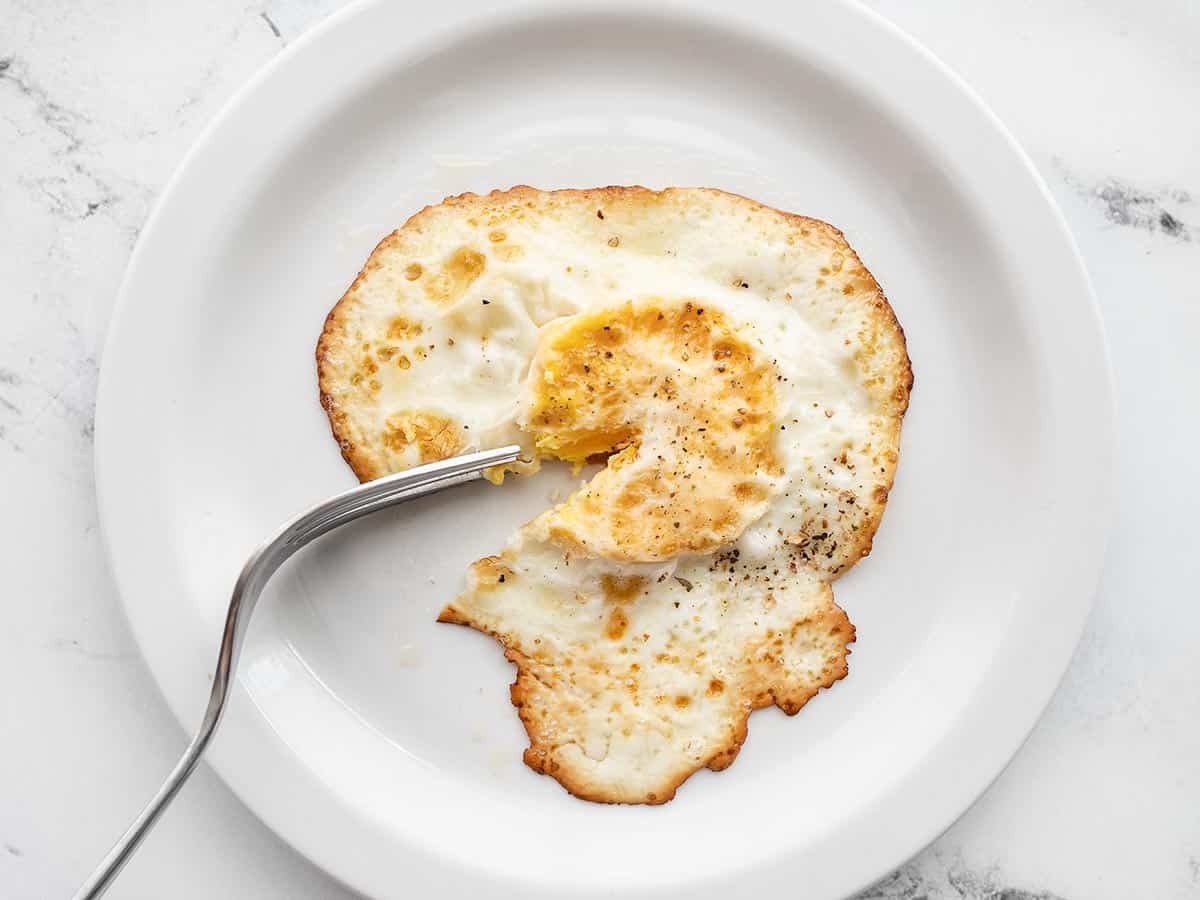
An egg fried over hard is an egg that has been fried on both sides until the yolk is fully set. This type of fried egg is great for those who do not like runny yolks. It’s also the easiest, in my humble opinion, because you can use slightly higher heat and because you cook on both sides it goes a little faster.
To fry an egg “over hard” simply fry the egg on one side until the whites are about 50% set, then flip and cook on the second side until the whites and yolks are fully set. You can tell when they’re set by pressing lightly on the yolk with the spatula. When it feels firm, it’s set.
Over Medium
Over medium fried eggs are half-way between over easy and over hard. The yolks are jammy in texture. To achieve an over medium egg simply cook the egg on the second side until the yolks are partially set. As with the over hard eggs, you can test the doneness of the yolk by pressing it lightly with the spatula. It should have a little give, but not feel soft and liquidy.
Troubleshooting Fried Eggs
- Runny whites: if your egg runs all over the skillet instead of staying in a nice compact shape, either your skillet wasn’t hot enough before adding the egg or your egg is not fresh (or both!).
- Burned edges/uncooked whites: If the bottom and edges of your eggs get too brown before the whites are cooked through, the skillet is too hot. Try using lower heat next time, or adding a lid to cook from the top down at the same time. To save this egg last minute, simply flip it and cook briefly on the second side to finish cooking the whites without continuing to brown the bottom (making it over easy or over hard).
- Broken Yolk After Flipping: Be gentle, my friend! Flipping too aggressively can cause the yolk to break when you flip the egg. Trying to flip the egg too soon can also lead to a broken yolk. If you’re planning to cook your egg over hard, a broken yolk won’t be an issue, but it can be a bummer if you’re aiming for over easy.
- Egg Shell in the Skillet: To prevent getting little bits of broken egg shell in your fried eggs, make sure to tap the egg shell on a flat surface rather than the side of the pan, which can push the shards into the egg whites. For extra precaution, you can crack the eggs into a bowl first, then slide them into the skillet after you’re sure there are no shell fragments in the eggs.
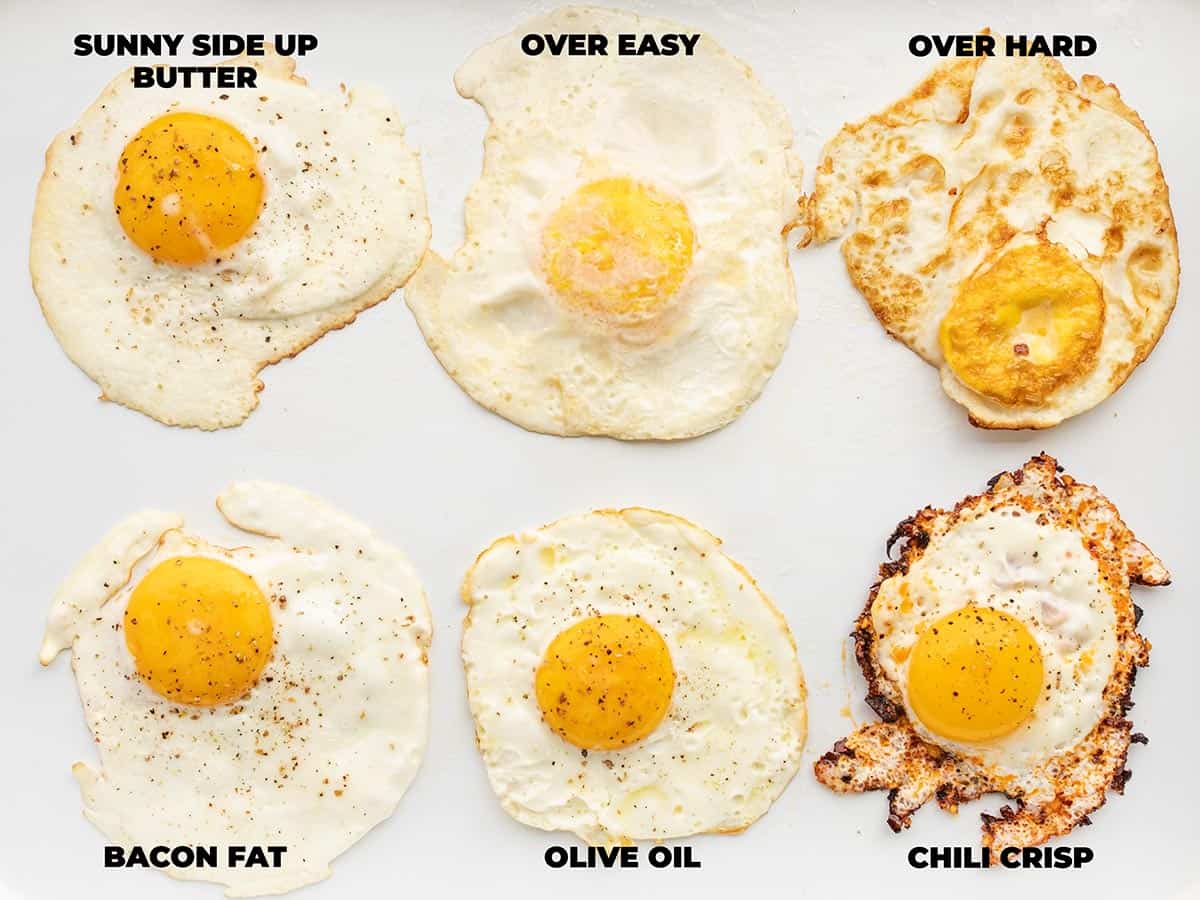
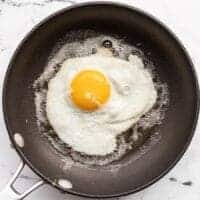
How to Fry an Egg
Equipment
Ingredients
- 1/2 tsp butter
- 1 large egg
Instructions
-
Heat a skillet over medium-low, allowing it to fully pre-heat (3-5 minutes).
-
Add the butter (or fat of choice) and swirl to coat the surface of the skillet.
-
Crack the egg into the frying pan and cook until the whites are set and the yolk is still liquid (sunny side up).
-
For over easy, over medium, or over hard, cook the egg until the whites are 50-75% set, then flip the egg and continue cooking on the second side until the yolk is cooked to your desired doneness.
-
Transfer the egg to a plate and season with salt and pepper. Enjoy!
Nutrition
How to Serve Fried Eggs
Fried eggs aren’t just for breakfast! You can add a fried egg to just about any meal for a quick and inexpensive protein boost. Here are some delicious recipes that would be great topped with a fried egg:
Other Ways to Cook Eggs
Looking for other ways to cook your eggs? Check out these other recipes:
The post How to Fry an Egg appeared first on Budget Bytes.

0 comments